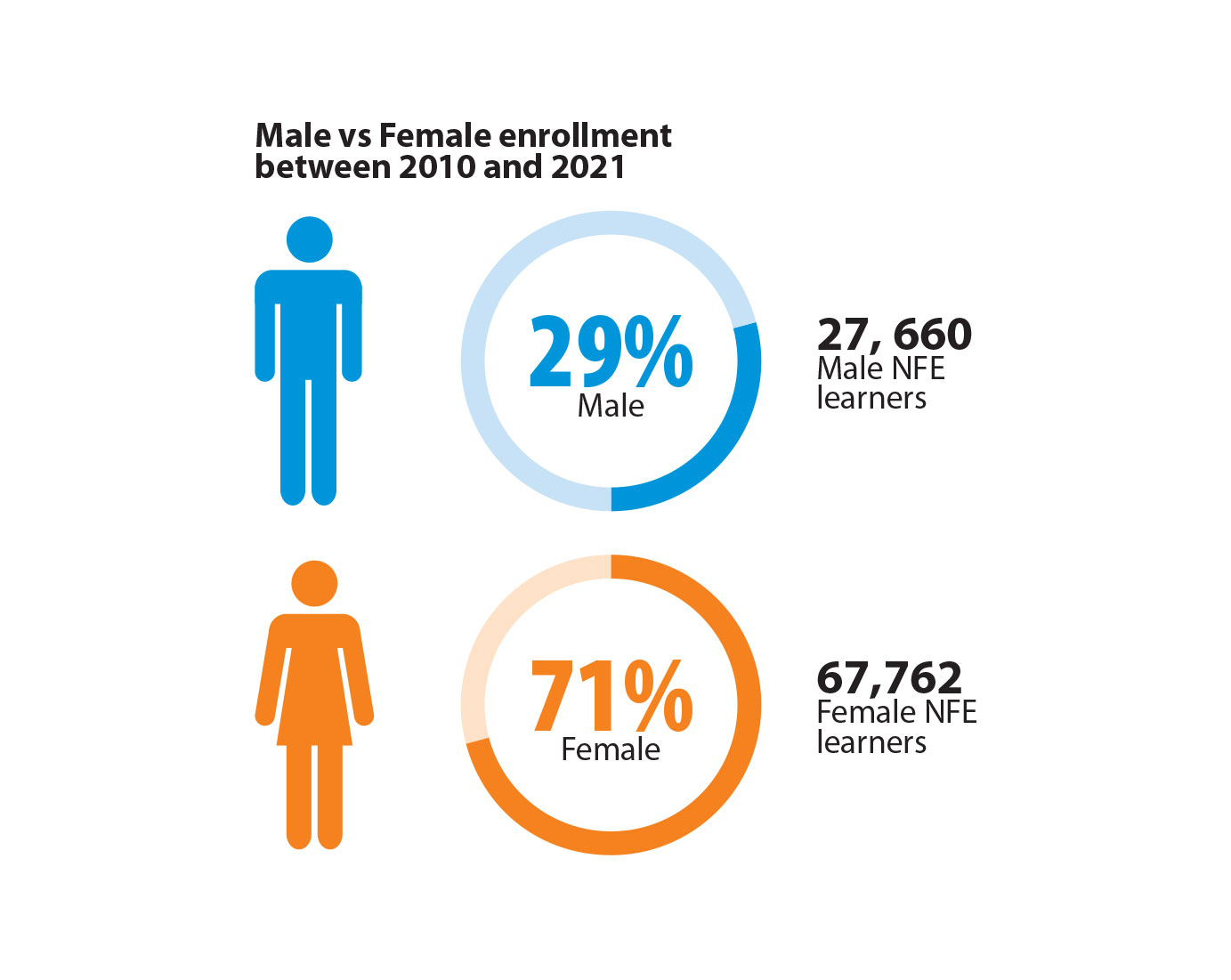Yangyel Lhaden
The Ministry for Education and Skills Development is slowly closing down non-formal education (NFE) centres across the country in phases upon completion of a course.
By last month, of the 505 NFE centres in 2022, 40 NFE centres had been shut down. A centre has to have a minimum of eight learners for it to continue.
The ministry is also in the process of fully shutting down NFE centres in dratshangs, dzongs, and prisons.
According to an education ministry official, NFEs primarily focused on teaching basic reading and writing skills, which were being taught in the dratshangs and dzongs.
“NFE programmes are being discontinued in prisons due to challenges of maintaining consistency with prison routines, inmate transfers, and completion of sentences,” the official said. “Furthermore, it is noted that many individuals in prisons already possess basic literacy skills.”
The official said that for NFE centres in gewogs, dzongkhags, and in thromdes, the learners’ enrollment has been decreasing over the years with some centres not meeting the minimum requirements. “The closure is limited to those centres which do not meet the minimum learner enrollment requirement.”
In 2010, there were 13,211 learners, but it has been decreasing in recent years. In 2017, the learner count dropped to 6,832, which further decreased to 6,225 in 2018, 5,539 in 2019, and 4,928 in 2020. However, there was a slight increase to 5,412 learners in 2021, but it once again dropped to 5,082 learners last year.
The rapid closure is expected to impact the remaining learners who are deprived of the service.
Sangay Zangmo, an NFE learner from Yadi, Mongar said that she was concerned about the possible closure of her centre if it failed to meet the minimum requirement. “Although I try my best to attend the classes daily, it is challenging due to household chores.”
Sangay believes that the centre should remain open because whenever they have the opportunity, they make an effort to attend and study. “It is important to have a sustainable place where individuals like me, who missed out on earlier educational opportunities, can continue their studies at any time.”
It is Sangay’s second time attending NFE. She first attended the classes eight years ago but couldn’t learn much. “Presently, the instructor is good. Those who attended earlier cannot even write alphabets and are now learning again.”
Since 1990, there are about 200,000 NFE learners. In 2020, NFE learners contributed 66.05 percent to adult literacy, according to records with the NFE office. However, the nation’s adult literacy is 64.9 percent, according to Bhutan Living Standard Survey (BLSS) 2022.
According to the survey, the adult literacy rate in urban areas is 79.5 percent—73.1 percent for females and 86.3 percent for males. In contrast, the rural adult literacy rate is significantly lower at 56 percent, with 65.4 percent for males and 47.1 percent for females.
An official with the National Statistics Bureau said that during the BLSS survey individuals were asked whether they could read and write. “ If a person has attended any other forms of schooling but can’t read and write then they are not counted as literate.”
“Many women are benefitted by NFE,” another NFE learner, Rinchen Wangmo said. “In villages, NFE shouldn’t be closed. The government should find other alternatives to keep the centres running.”
Women attending NFE represent approximately 144 percent more than men from enrollment data between 2010 and 2022. In this period 67,762 women and 27,660 men attended NFE.


